Patent-Motorwagen (Karl Benz, 1886)
Patent-Motorwagen (Karl Benz, 1886)
The Benz Patent-Motorwagen is widely regarded as the first vehicle propelled by an internal combustion engine.
Grades 1 – 12
mozaLink
/Weblink
Questions
- In which German city did Karl Benz build his legendary vehicle?
- What was the name of Karl Benz' wife?
- How did Benz' wife help to promote the vehicle?
- How many pedals did the vehicle have?
- Which company was founded by Karl Benz?
- When was Karl Benz born?
- What was the function of the flywheel?
- How was the flywheel mounted?
- Is it true that people could shift gears while driving the vehicle?
- Is it true that the vehicle had steel wire-spoked wheels with solid rubber tyres?
- Which component was missing from the automobile's engine?
- How many wheels did the vehicle have?
- What was the frame of the vehicle made of?
- Which component was missing from Benz' automobile?
- What was the top speed of the vehicle?
- What was the power output of the engine?
- How many cylinders did the engine have?
- What was the mass of the engine?
- When was the vehicle awarded the German patent?
- What nationality was Karl Benz?
Scenes
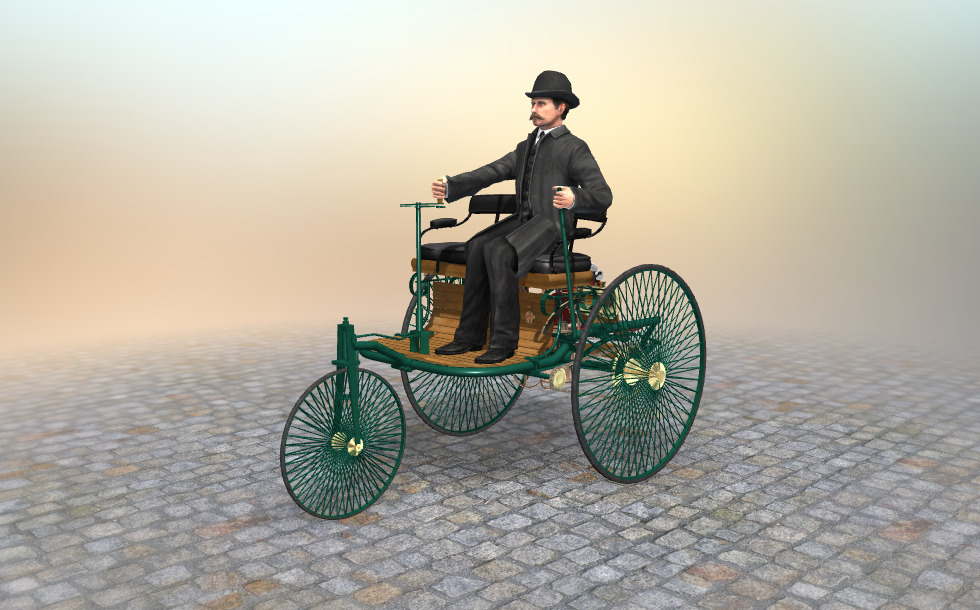
Patent-Motorwagen
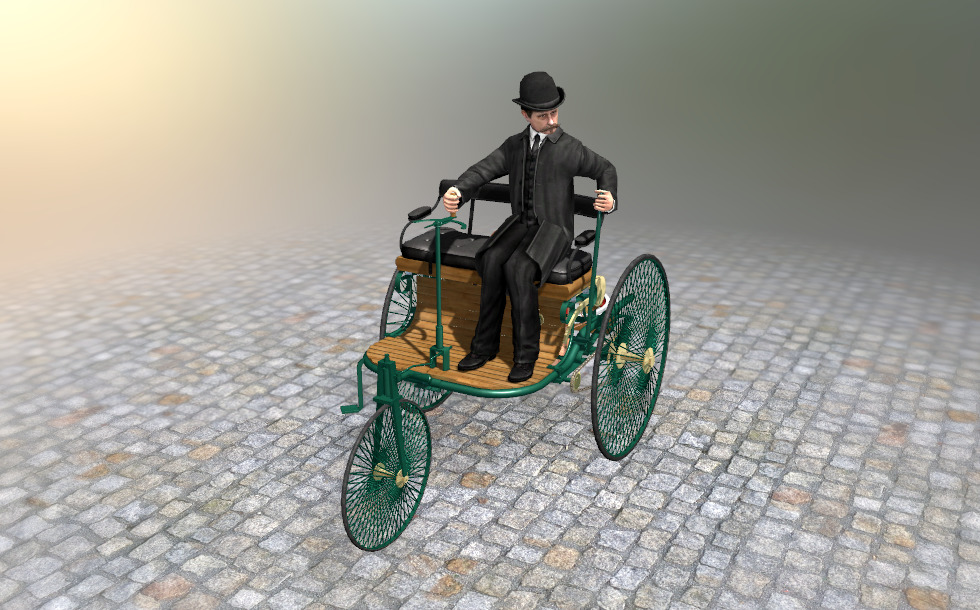
Views
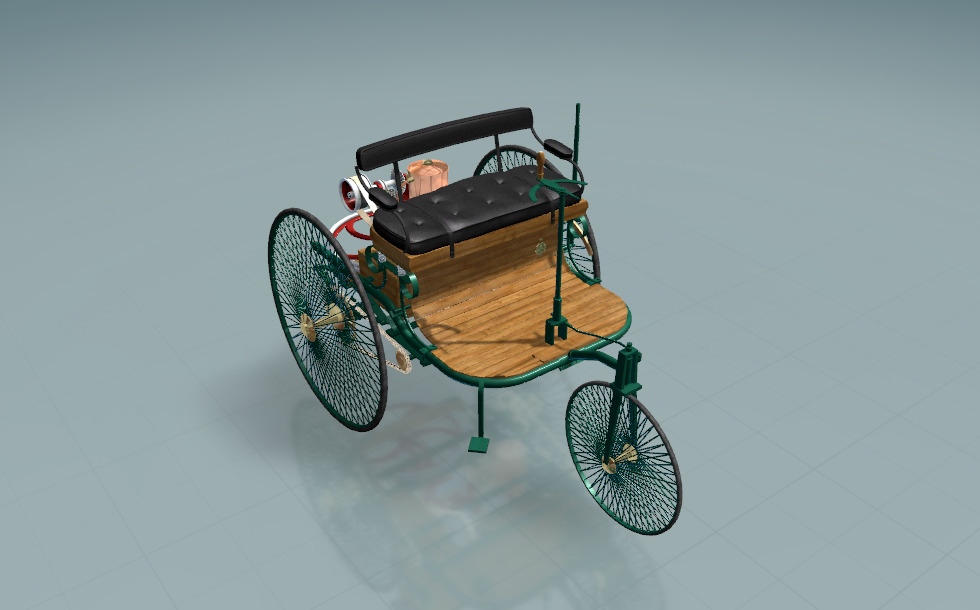
Construction
- steering handle - A toothed rack was used to control the front wheel.
- seat
- front wheel
- side step
- rear wheel - The steel wire spokes and the solid rubber tyres were developed by Karl Benz himself.
- air intake
- wooden panels
- tubular steel frame
- leaf spring
- throttle lever - It had three positions. If it was pushed forwards, the vehicle started to move. When pulled backwards, it functioned as a brake, and in a neutral position the vehicle remained stationary.
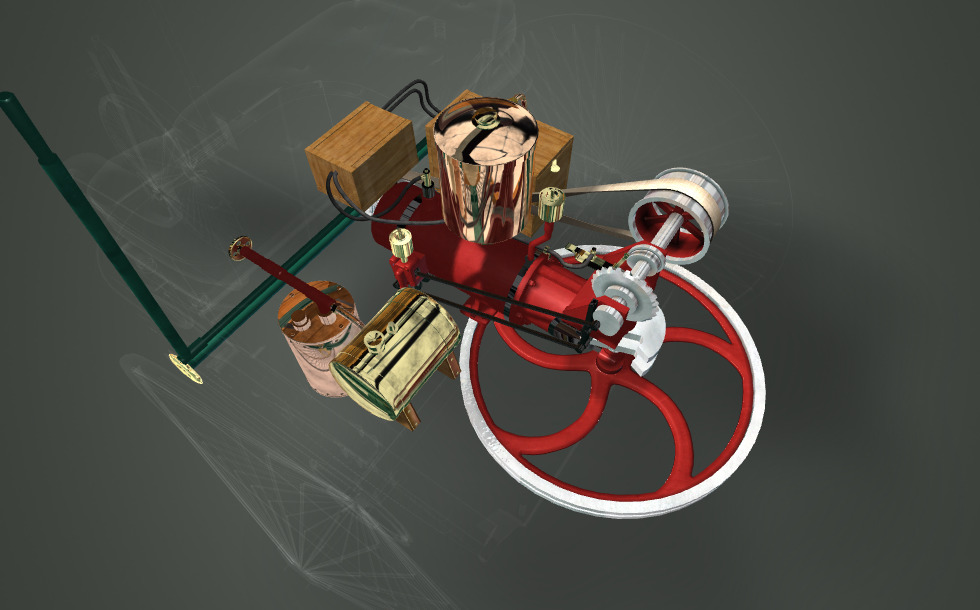
Engine
- coolant reservoir
- battery
- spark plug
- cylinder
- carburettor
- fuel tank
- flywheel - It had to be turned manually to start the engine.
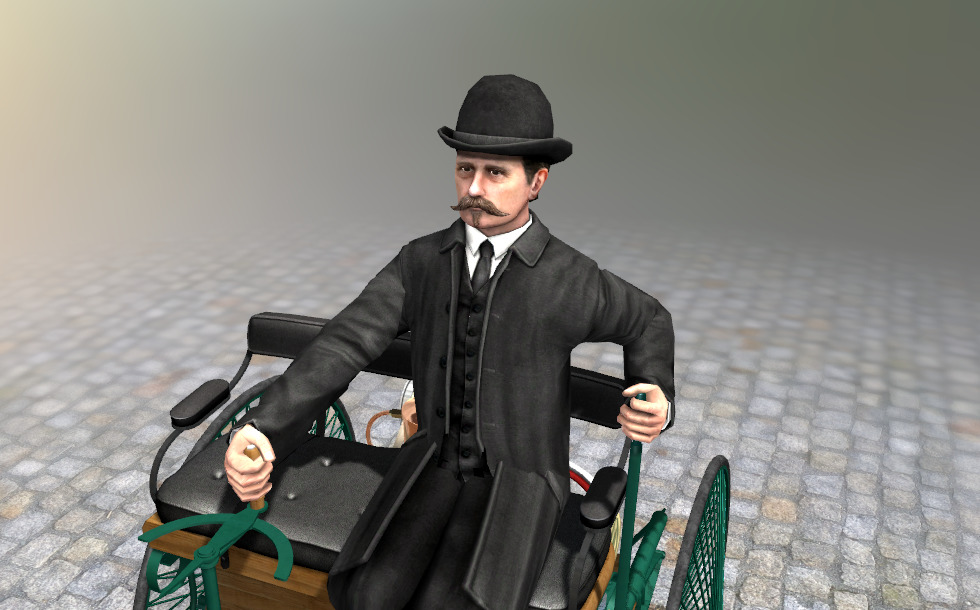
Karl Benz
German engine designer, engineer and inventor Karl Benz is known for building the first automobile propelled by an internal combustion engine and for being the co-founder of the automobile manufacturer Daimler-Benz AG.
Benz applied for the German patent for the vehicle on 29 January 1886 and unveiled it to the public in Mannheim on 6 July 1886.
With his three-wheeled automobile, Benz introduced several innovations that he himself had developed. These included steel wire-spoked wheels with solid rubber tyres, a tubular steel frame, toothed-rack steering and elliptic springs.
The Patent-Motorwagen Model I was powered by a single-cylinder, four-stroke engine which had a capacity of 954 cubic centimetres. It was fuelled by ligroin, a type of petroleum solvent available at chemists’, and needed about 10 litres of fuel to cover a distance of 100 kilometres. The engine could be started by turning the horizontally mounted flywheel manually. Power was transmitted to the rear axle by two drive chains.
The vehicle became popular and recognised with the appearance of the improved Patent-Motorwagen Model III, which was also the first to be sold in series. This is mainly attributed to Bertha Benz’s bold move. In August 1888, without the knowledge of her husband, she decided to take the Patent-Motorwagen Model III and set out on a journey with her two sons. She drove from Mannheim to her hometown, Pforzheim, covering a distance of about 106 kilometres. She wanted to promote the new invention, and she was also eager to prove that the automobile was reliable and capable of travelling long distances.
Her journey can be considered the world’s first long-distance road trip with an automobile and she can be regarded as the first female driver. As a result of this move, she successfully dispelled any doubts in connection with the vehicle, thus contributing to the fame of the manufacturer.

